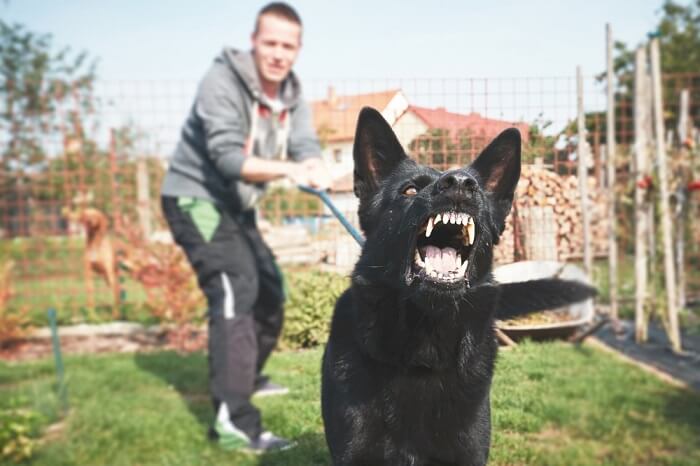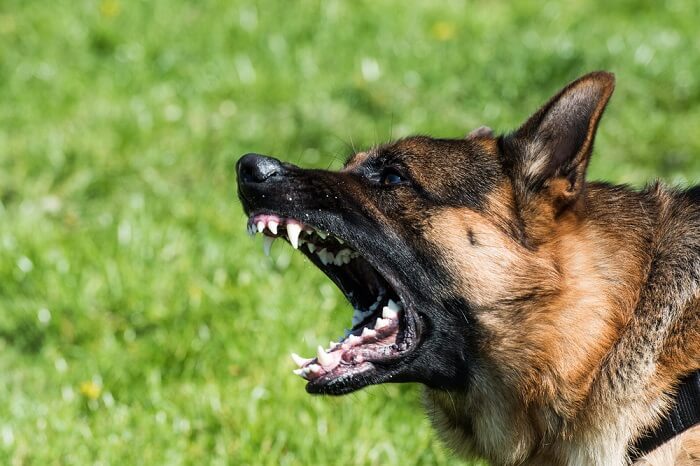Being a dog owner can be one of the best things in the world. Frequent interaction with your beloved furry friend has already been proven to improve your mood, relieve stress, and ease loneliness. Dogs are also considered the most loyal animals to humans, offering you companionship their whole lives. However, caring for one isn’t always rainbows and sunshine. As they say, being a pet owner will require patience and intense preparation. And, one of the aspects you need to prepare for is their possible attitude changes, such as sudden aggressiveness.
Why Do Dogs Show Aggression?

The most common reason dogs show aggression is because they feel protective or territorial. This usually happens when they see strangers or other animals step into their homes, touch their food, or get their toys. This type of aggression is called protective or territorial aggression, and, fortunately, this can be fixed by proper dog training. You can look for a dog training service provider online and check their page to book an appointment.
Dog aggression is categorized into the following types:
- Fear-motivated aggression: If a dog senses danger in any way, it may react aggressively and may bite the threat to protect themselves.
- Redirected aggression: If your dog is provoked by an animal or person, but is unable to attack (perhaps, they’re confined inside the house or in a fence), they’ll redirect this aggression to someone else, such as to another dog in the house.
- Social aggression: Dogs that weren’t socialized properly with other humans or dogs may exhibit aggression, especially when suddenly exposed to crowded places.
- Pain-elicited aggression: A dog may show aggression when hurt or injured.
When your dog is being aggressive, you can quickly tell it through their behavior or physical signs, like:
- Guttural and threatening barking
- Showing teeth
- Being rigid and still
- Growling
- Snapping
- Showing teeth
- Biting
Watch out for these signs so you and your family can prevent possible dog attacks and other dangerous situations.
How To Deal With An Aggressive Dog?

When your dog starts showing aggressive behavior, you don’t need to panic. Below are ways and tips to deal with an aggressive dog and help them overcome it:
- Calm Down
If your dog is being aggressive, the last thing you must do is to be nervous or anxious. Dogs can feel the emotions and energy you’re giving off. So, when you feel stressed, scared, or anxious, they tend to feel the same way, too, hence, worsening their aggression. Furthermore, screaming or shouting loud and angry words will elevate the dog’s aggression and cause him to attack you.
The best thing you can do when your dog is aggressive is to calm down and relax. Use your soft and soothing voice to call their name when approaching your dog. When you’re calm and relaxed, your dog will feel safe and comfortable with your presence and eventually help their aggression subside.
- Assess The Cause Of Their Aggression
One of the common mistakes some pet owners make is to quickly assume that their dog is naturally aggressive, and scolding them will help solve the issue. However, dogs only show their aggressive behavior when something is lacking, they’re not getting what they need, or they have an underlying health condition.
So, instead of blaming your dog’s natural aggressiveness, assessing the possible causes of their aggression before you react is recommended. For example, did your dog become aggressive after seeing a random dog pass by the window? In that case, you can close the window temporarily to block their view and give them some toys for distraction.
Also, did your dog’s sudden aggressiveness came with other symptoms, like loss of appetite or lethargy? This may signify that they have an underlying sickness, so you’ll need to take them to the vet immediately.
Paying attention to the cause of their aggressive behavior will help you understand your dog better and determine how to approach the problem.
- Confine Your Dog
As the owner, whatever your dog does is your responsibility. If your dog is always aggressive to strangers or neighbors, and you fear they could attack or bite anyone, it’s your job to keep them safely confined. Ensure your fence and gate are locked to prevent your dog from escaping and possibly attacking anyone. If you have incoming visitors, put your dog on a leash or in a cage, or muzzle them to keep them confined in case they start being aggressive again.
- Seek Professional Help
Remember, confining your dog shouldn’t be your permanent solution to your dog’s aggressiveness. If the root cause of this behavior is their territorial or social aggression, it’s recommended to seek professional help from certified dog trainers or animal behaviorists.
Hiring dog trainers isn’t only about teaching them to do tricks or basic commands. Dog training also focuses on improving your dog’s behavior, including issues like aggression. Your dog trainer will help your furry friend adjust and adapt to social situations that normally trigger their aggression. Soon enough, you’ll be able to take your dog anywhere without worrying about them suddenly becoming antagonistic.
- Keep Your Dog Physically Active
Dogs who regularly get exercise and stay physically active tend to be happier and healthier, and are less likely to lash out and be aggressive. So, if your dog seems to be a bit moody and aggressive these days, perhaps, it’s a sign that they’re not getting enough exercise and physical stimulation.
Wrapping Up
Your dog’s aggressive behavior doesn’t always signify that they’re a bad dog. Since they can’t talk like humans, their behavior and body language are their methods of communicating to their owners about what they need or what’s going on. So, instead of scolding or punishing them for their aggressive behavior, extend your patience and efforts towards them, and go through these tips above to help you deal with your dog’s aggressive behavior correctly and healthily.